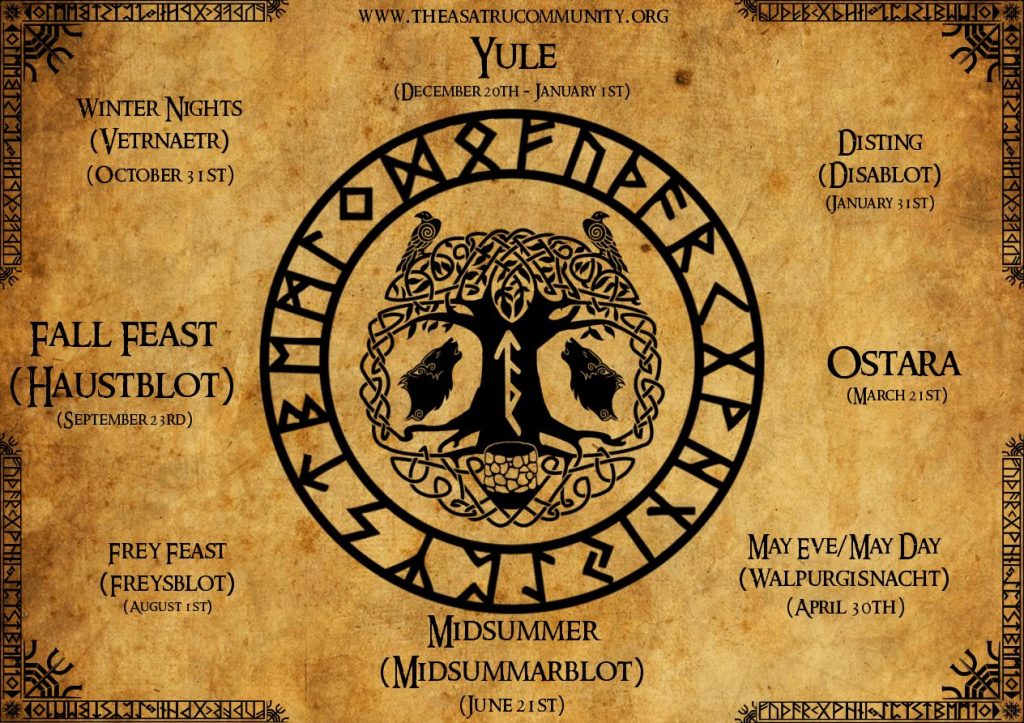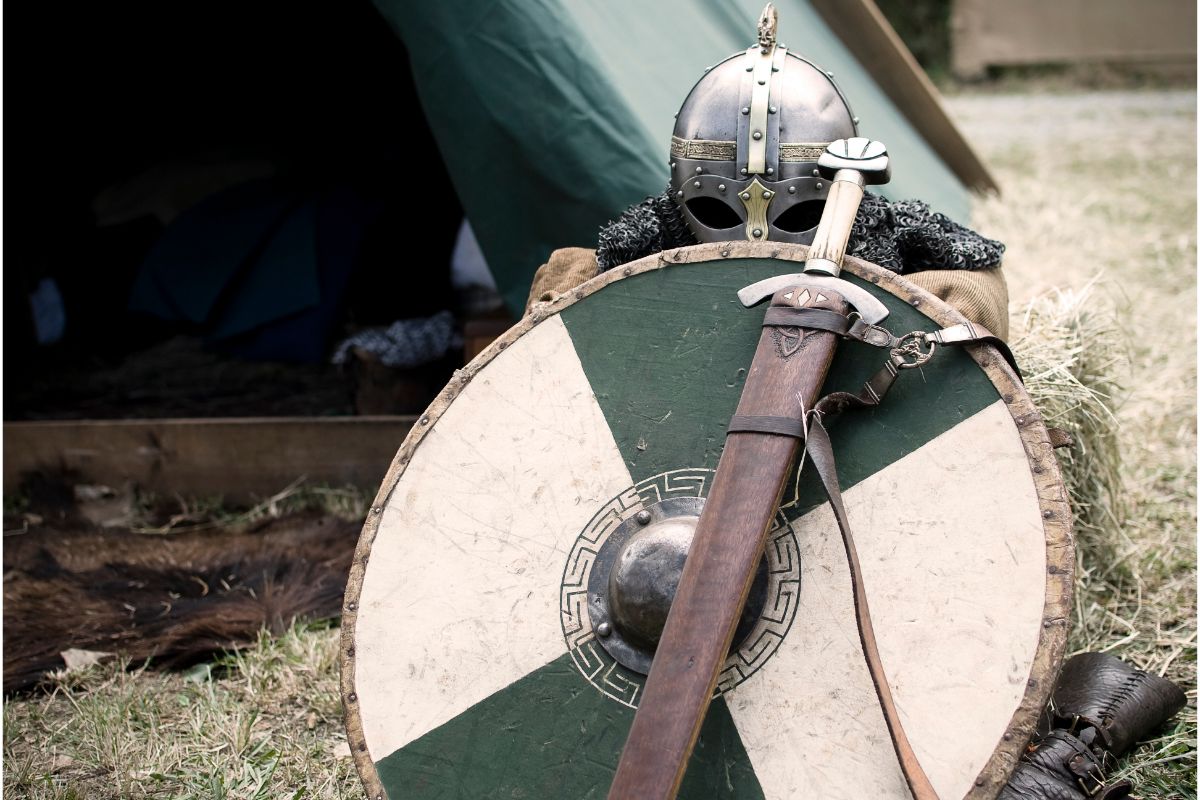It's been almost 1,000 years since the Viking age, but modern-day polytheistic Norse pagans still practice and study the old texts. There aren't very many, but they exist.
While numbers declined sharply once Christianity was introduced to Northern Europe, those numbers have consistently risen within the past 10 years.
From comic books to television shows, one thing is clear: Norse paganism hasn’t loosened its grip on humanity.
What Religion Is Norse paganism?
Norse paganism is a polytheistic religion that worships the multiple gods within the Poetic Edda and Prose Edda.
Like some other religions, the Old Norse religion has multiple denominations, some of which are as modern as the 1970s.
While some old Norse pagan sects try to recreate the old Viking ways, others take a more modern approach.
Under Norse mythology, there are four different sects (or denominations).
1. Asatru
Asatru is the more modern-day take on Norse mythology, and it was assembled in the early 1970s in Iceland.
Asatruars follow the old texts of Norse mythology under a modern lens. They gather outdoors to pray to the gods, hold rituals called blót, and have various festivals and religious practices throughout the year that include Yule, Harvest Feast, FreyFest, FallFeast, and Midsummer, to name just a few.

2. Norse Paganism
Norse paganism is a more general term for those studying Norse gods and rejecting Christianity directly.
Paganism refers to any polytheistic pre-Christian religion that rejects the idea of monotheistic religions.
3. Heathenism
Some Norse pagans referred to themselves as Heathens and studied Heathenry, a blatant rejection of Christian beliefs. Heathens not only worship the old Norse gods but also show slight disdain for the Christain faith and how it swept over and washed away much of Norse mythology in Nordic Northern Europe.
Even the Prose Edda has hints of Christan ideologies within Snorri Sturluson’s text. Remember that even though Snorri recounted and revered the old Germanic texts of the Norse gods, he was still a Christian. And the Prose Edda has hints of Christian influence.
*Make sure to check out my article about Norse paganism Vs. Christianity.
4. Forn Sidr
The term Forn Sidr translates to ‘Old Way.’ Forn Sidr is the oldest form of Norse paganism that dates back to ancient Scandinavia before Christianity took hold.
As Christianity, also known as the ‘new way,’ picked up steam throughout Scandinavia, Vikings that still believed in the Norse gods and rejected monotheistic religions were called Forn Sidr, and the term is still used today.
Why Did The Norse Convert to Christianity?
Christians landed in Nordic countries in the 900s, and many Norse pagans switched over to Christianity. However, their switch wasn’t entirely theological. Maintaining good relations with Christian settlers boosted trade and an increased influx of goods into the region.
Converting over to Christianity had positive political and economic advantages, and many of the Germanic people abandoned their belief systems and Norse deities for these reasons.
While the Norse religion was replaced with Christianity throughout most of the modern age, Norse paganism has been one of the fastest-growing religions in Iceland over the past 10 years. There are some statistics coming out of Iceland that indicate the practice of Ásatrúarfélagið is up by 244% in the last 10 years!
Norse Religion Facts: What Do Norse Pagans Worship?
Worship in Norse paganism doesn’t look like worship in other religions. The ancient Vikings didn’t have sacred texts that served as rule books like modern religions. Instead, they met to thank the gods, make offerings, or seek guidance and protection.
They pray or make a toast to the Æsir gods, which include Odin, Baldr, Höðr, Frigg, and Thor. Here are a few of the old Norse gods and why pagans pray to them:
- Njörd: Good harvest and financial prosperity.
- Freyja: Boost fertility or help in finding love.
- Thor: Sailors often pray to Thor for good weather or strength in the face of adversity
- Odin: Wisdom for overcoming personal challenges
While Norse mythology stands apart from other monotheistic religions, there are a few similarities. Since there is no scripture, like the bible, many communities are centered around a single chieftain, high priest, also referred to as a goði.
Goði often leads religious ceremonies, funerals, sacrifices, or lead festivals and feasts. Since there is no central scripture, polytheists look to the Goði to lead worship.
Most areas of Northern Europe have more than one goði, with the highest position being the Allsherjargoði (or Goði Of All). Think of the goði as priests and the Allsherjargoði as the pope.

Where do Norse Pagans Worship?
Many modern and ancient Norse pagans worshiped outdoors and rarely used temples or other structures. However, as Christianity swept over Northern European countries, Norse pagans started to follow suit in constructing their own god houses.
In 2020, the remains of an old Norse pagan temple was discovered in Norway, likely a place that hosted festivals and feast for the gods. Archelogogist found animal bones inside the structure’s remains, which probably indicated animal sacrifices to please the gods.
Modern Norse pagans stick to worshiping outdoors and rarely use temples. The construction of Norse temples was a product of Christian influence, which modern Heathens often try to avoid.
Is There a Norse Bible?
The Poetic Edda is considered to be the Norse Bible.
It is composed of 31 poems of unknown origin that depict the beginnings and tales of the gods like Thor, Loki, Odin, Freyja, and the twilight of the gods (Ragnarök). Keep in mind that the Poetic Edda isn’t exactly light reading. Even if you enjoy diving into ancient texts, it’s challenging to comprehend. While the Poetic Edda is the sacred text, the Prose Edda makes things a little easier to digest.
It’s highly recommended that you read Snorri Sturluson’s Prose Edda before diving head-first into the Poetic Edda. Snorri adds commentary on the texts and provides a bit of context, making it much more manageable to read. Once you finish the Prose Edda, the Poetic Edda will make a little more sense.
Suppose you want something more modern than Snorri’s Prose Edda. In that case, Neil Gaiman’s Norse Mythology book recreates the Prose Edda’s poems in a modern-day take that’s easier to read and understand than some older, heavily-translated Swedish texts.
*Also, check my article on the Best Norse Paganism Books.

